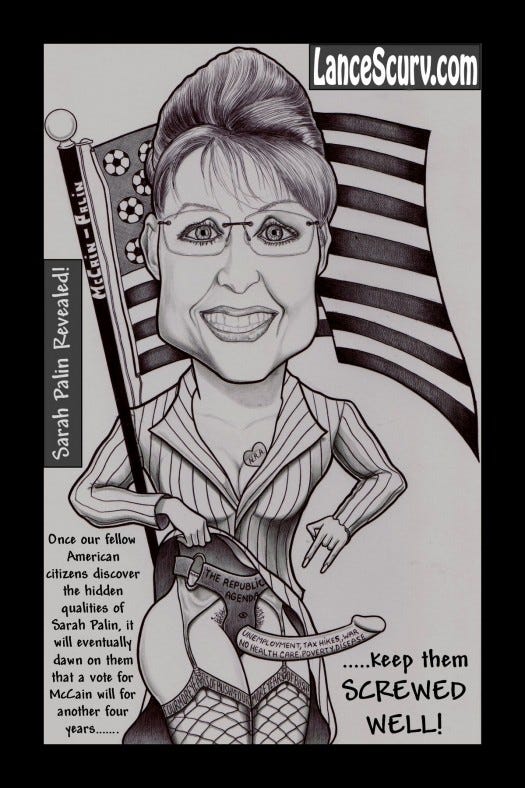SARAH PALIN REVEALED...
THE HIDDEN SYMBOLISM OF A POLITICAL ENIGMA!
The Rise of Sarah Palin: A Political Phenomenon
In 2008, the Republican Party made a bold and unexpected move by selecting Alaska Governor Sarah Palin as John McCain’s running mate in the presidential election. Virtually unknown on the national stage before her nomination, Palin quickly became a polarizing figure. To conservatives, she was a fresh, relatable “hockey mom” with strong traditional values. To liberals, she was an inexperienced politician with questionable competence.
Despite her folksy charm, Palin’s candidacy raised serious concerns. She stumbled through major interviews, particularly one with Katie Couric, where she failed to name a single newspaper she regularly read. Her lack of foreign policy knowledge became a punchline after she claimed that Alaska’s proximity to Russia gave her international experience. Yet, despite these blunders, she energized the Republican base, particularly social conservatives who saw her as a defender of traditional American values.
The Fantasy and the Reality
Palin’s attractiveness and confidence added another layer to her public image. She was often framed as a conservative sex symbol, with media coverage and internet forums buzzing about her looks. Some right-wing figures embraced this portrayal, while critics mocked it, highlighting the irony of her being sold as both a wholesome family woman and a figure of male fantasy.
This contradiction is what inspired Sarah Palin Revealed—a visual critique of the illusion surrounding her. The provocative pose, with Palin lifting her skirt to reveal a harness labeled The Republican Agenda, strips away the surface appeal and exposes the reality of what she represented.
The Republican Agenda: What Was Really Being Pushed?
In 2008, America was grappling with the aftermath of George W. Bush’s presidency. The economy was collapsing due to the financial crisis, unemployment was rising, and millions of Americans were losing their homes. Meanwhile, healthcare reform was a major concern, and the ongoing wars in Iraq and Afghanistan had exhausted public patience.
The harness Palin wears in the image isn’t just an accessory—it’s a metaphor for how conservative policies would "screw" the American people. The phallic symbol attached to it, covered with words like unemployment, tax hikes, war, no healthcare, poverty, disease, represents the consequences of the Republican platform. Despite the party’s rhetoric of patriotism and family values, their policies often seemed to harm the very people they claimed to protect.
The Message Behind the Satire
The caption makes the point clear: Once our fellow American citizens discover the hidden qualities of Sarah Palin, it will eventually dawn on them that a vote for McCain will, for another four years, keep them well screwed.
This blunt yet effective statement encapsulates the frustration many felt toward the Republican ticket. While McCain was a respected war hero, his decision to choose Palin as his running mate raised serious doubts about his judgment. Could someone so inexperienced and unprepared truly be a heartbeat away from the presidency? And more importantly, if elected, would their administration continue the destructive policies of the Bush era?
The 2008 Election: A Defining Moment
Ultimately, Barack Obama and Joe Biden secured a decisive victory, winning 365 electoral votes to McCain and Palin’s 173. The election was historic, not just because Obama became the first Black president, but because it signaled a rejection of the Republican platform that Palin embodied.
After the election, Palin’s influence in mainstream politics waned, though she remained a figure in right-wing media. She became an early supporter of the Tea Party movement and continued making controversial statements, but her moment on the national political stage had passed.
Art as Political Commentary
Sarah Palin Revealed is more than just an adult-themed satire—it’s a powerful critique of political deception. It forces viewers to look beyond image and charisma to see the policies lurking beneath. By merging sexuality with political symbolism, it highlights how voters can be seduced by personality while ignoring the consequences of their choices.
In the end, this piece serves as both a time capsule and a warning. It reminds us that politicians, no matter how appealing their surface image may be, must be judged by the policies they champion. And in 2008, America decided that Sarah Palin’s agenda wasn’t worth the ride.



